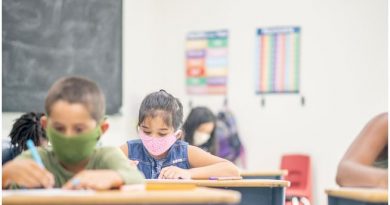Education Technology in 2020: 8 Takeaways From a Chaotic Year
Digital technology was a lifeline for many educators this year, but it was also a source of frustration, bewilderment, and fatigue.
Videoconference platforms allowed teachers and students to stay in touch even when they couldn’t set foot in the same room, but they also presented a host of privacy, logistical, and learning challenges.
Learning management systems and online repositories of course materials supplied teachers with tools for collecting student work and disseminating activities, but they proved daunting to some educators who hadn’t used them before.
Wi-Fi hotspots and portable computers kept students and teachers connected from home. Still, the digital divide became more prominent than ever as longstanding inequities in technology access threatened to widen existing gaps in opportunity and achievement for students of color with disabilities, and students in other vulnerable and marginalized groups.
It was a dizzying, dramatic, devastating year that brought education technology to the forefront at an unprecedented scale and transformed the education landscape in ways that may only become clear with years of distance.
To help you make sense of the chaos and better understand how the past nine months will shape the use of technology in K-12 education for years to come, we turned back to the journalism Education Week reporters produced in 2020 and the related survey data from the EdWeek Research Center.
Teacher-student interaction was much different than ever before.
Due to COVID-19, millions of students have been learning from home since March or only attending school buildings part-time for a good portion of the current school year. Teachers have had to use videoconference platforms like Zoom and Microsoft Teams and lower-tech alternatives such as phone calls and emails to keep in touch with their students. Many teachers prioritized ensuring that their students were doing well emotionally and that they could access instruction even when they couldn’t go to school in person.
The nationwide closure of K-12 school buildings this spring and the ongoing hybrid and remote learning in many districts this fall has made keeping in touch with all students challenging. Last spring, in particular, schools struggled to reach significant portions of their student population. Those practices have improved, though, and recent EdWeek Research Center data shows the number of teachers interacting with all of their students every day has nearly doubled in recent weeks from the low points of the spring.
Key lessons have been learned about teacher-student interaction that will be relevant when students return to school buildings full time.
Some students have been in live virtual classes all day, while others are only interfacing with teachers for a short time each day.
Prior to the pandemic, few U.S. schools had robust experience teaching most or all of their students virtually. Online instruction can take many different forms, some of which more closely resemble typical in-person instruction than others. Many online learning experts have urged schools to find ways within their limited resources to minimize live instruction time for their students and to instead encourage self-directed and project-based learning.
But those massive shifts in instruction aren’t easy to pull off amid a crisis situation, especially for younger students. Many teachers this fall have found themselves in dual teaching mode, with some students in person and others at home. Teachers have found that juggling acts difficult, and some schools have rearranged teaching assignments so that virtual students and in-person students can be assigned to separate groups of teachers.




